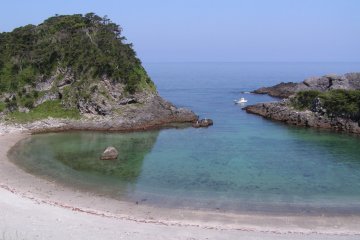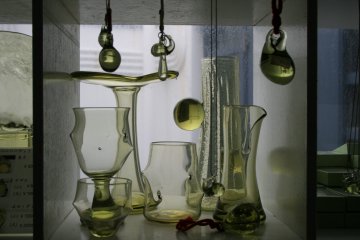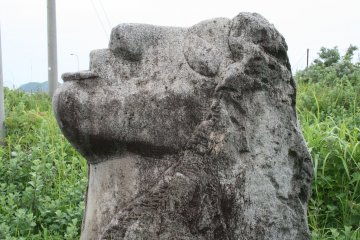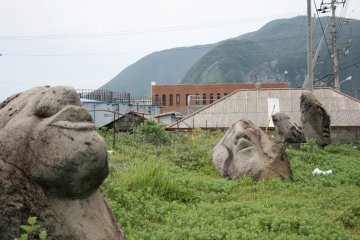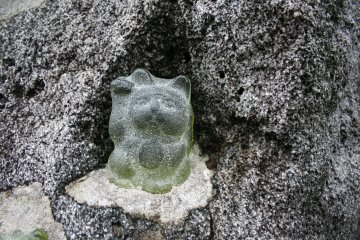You may not relate Tokyo to secluded beaches and island art but on Nii-jima, part of the Izu archipelago and broader Tokyo prefecture, rare koga stone is made into Polynesian inspired statues and green tinged glassware.
When your ferry pulls into the modest dock of Nii-jima, an island three hours south of Tokyo, you can choose to turn left towards town or turn right in the direction of the island's dramatic seaside and cliff-perched Yunohama Onsen. Whichever direction you take will expose you to one of the two ways which the island's native koga stone is used.
Following the shore to the east you will see how the light, easily manipulated rock is carved into statues of dolphins, women, beasts and two-faced characters. The port and beach are covered with these big statues crafted from hunks of rock. Appropriate to their island lifestyle and surroundings, many of the koga stone statues mimic the classic moai figures of Easter island. Many of the moai here have their mouths open and appear to be wailing at the volcanic cliffs behind them, which their founding stone was chiselled from. The statues are both for the sake of their aesthetic and elaborate moorings for boats.
Taking a hike west of the peer you will discover Nii-jima's Glass Art Centre where the silica of koga stone is manipulated to create olive-green glass, a product unique to only Nii-jima and Lipari island in Italy. The building is a white 1980s construction which stands out remarkably from the landscape. The center's museum dedicated to the use of glass internationally in modern art is integrated into a workshop in which you can see masters wield their goods and shopfront filled with final products and a lounge area with stunning views over the pacific.
This unique olive colored glass is used around the island for numbered signs, small sculptures and street markers.
Even though Tokyo has its lights, shopping and neon districts, the glass is always greener on the other side of Tokyo Bay.





